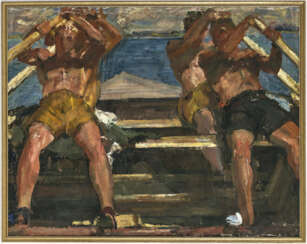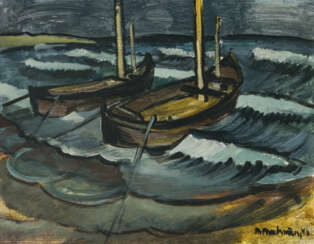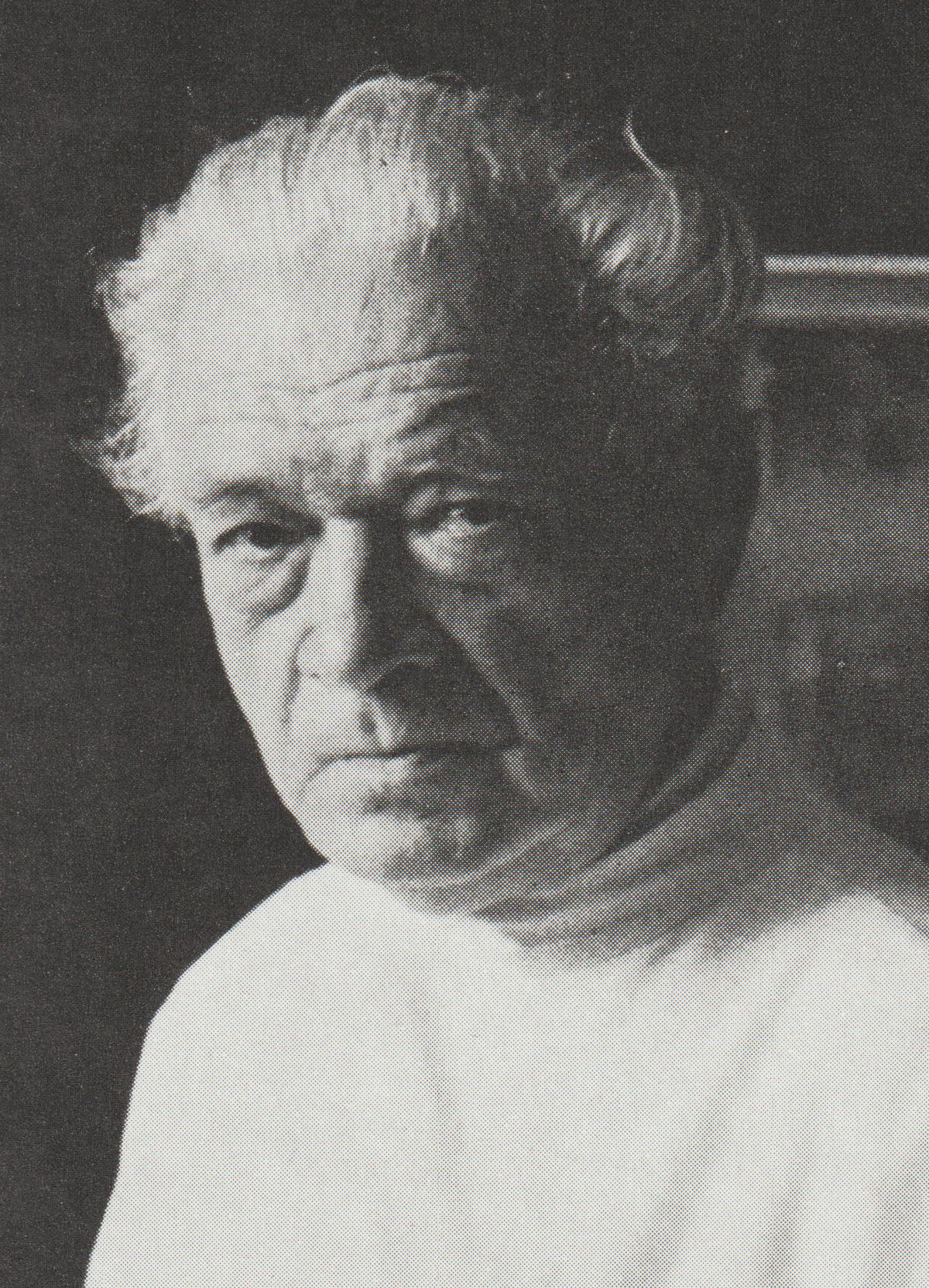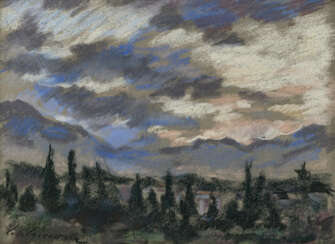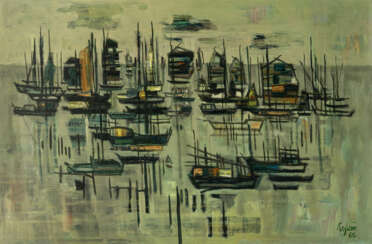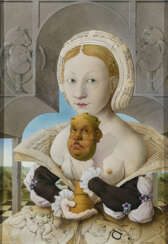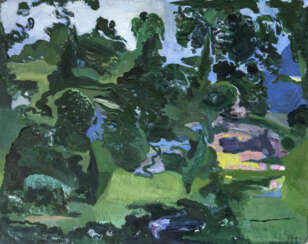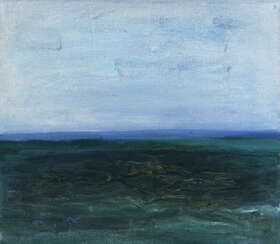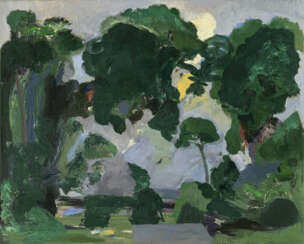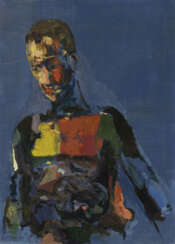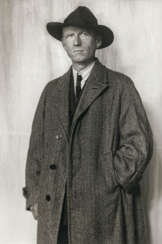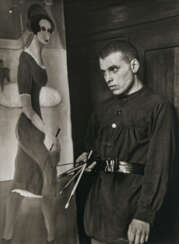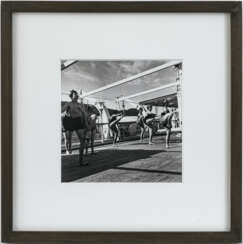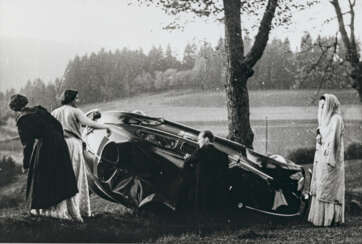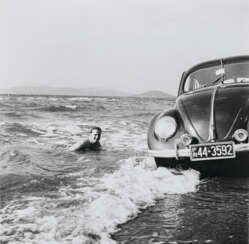
Modern and Contemporary Art
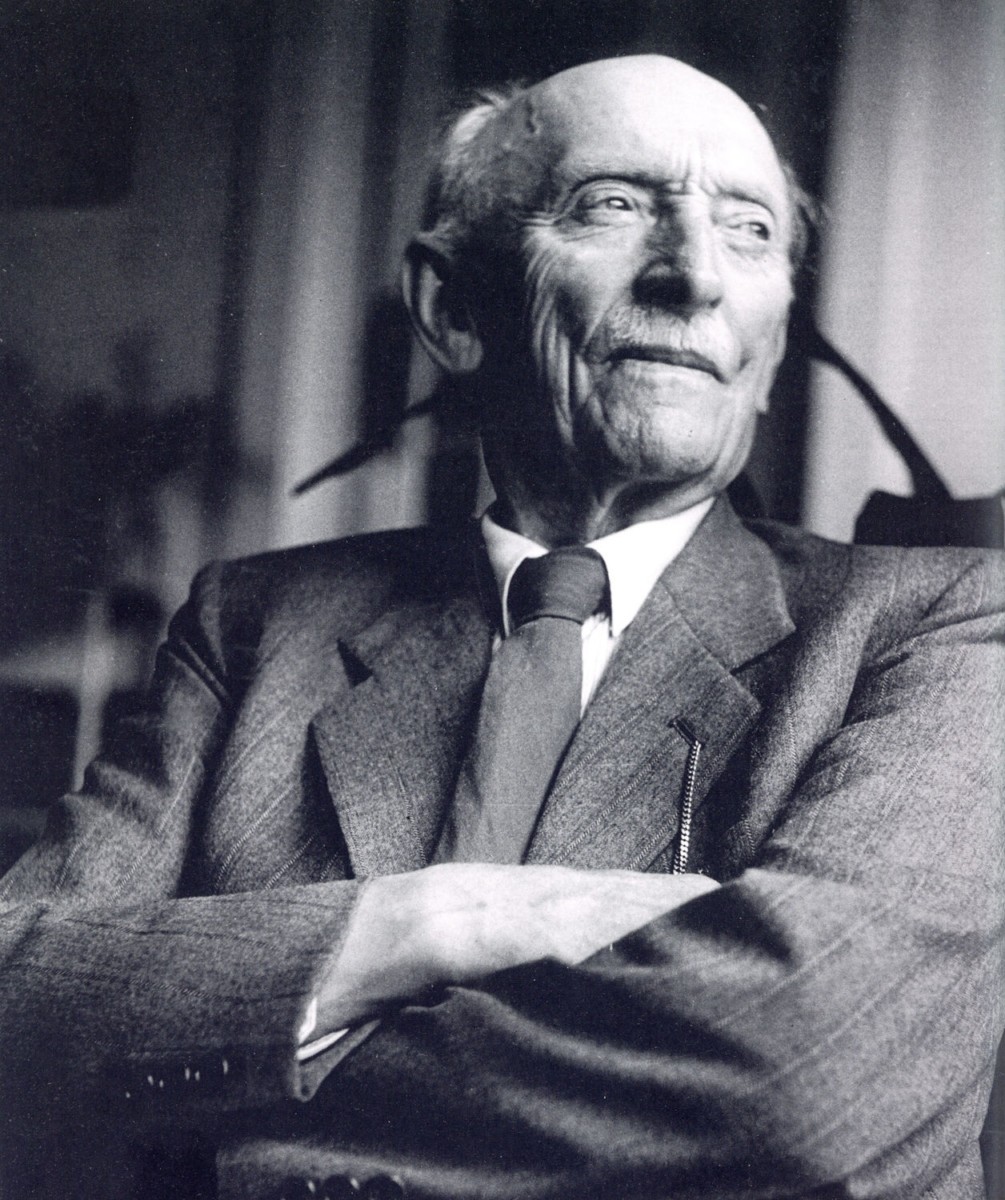
Emil Nolde, a German-Danish artist, stands out as a pivotal figure in the Expressionist movement, celebrated for his vibrant use of color and dynamic brushwork. Born on August 7, 1867, Nolde was initially self-taught, developing a style that later became synonymous with expressive use of color and form. His early work included religious themes and landscapes, characterized by their emotional intensity and innovative color palette. Nolde's contributions to art were not limited to painting; he also excelled in printmaking, creating a significant body of work that includes etchings, woodcuts, and lithographs.
One of Nolde's most noteworthy periods was his time spent on the Baltic Sea island of Alsen from 1903 to 1916, where he produced seascapes that captured the natural world's dynamic essence. His painting "Meer Bei Alsen" (Sea Off Alsen) is a testament to this period, showcasing his ability to convey movement and emotion through color. Furthermore, Nolde's fascination with religious and mythological themes is evident in works like "Dance Around the Golden Calf," where he employs vivid colors and expressive figures to explore complex narratives.
Despite his artistic achievements, Nolde's life was not without controversy. During the Nazi regime, his work was labeled "degenerate," and he faced significant professional and personal challenges. Nonetheless, Nolde continued to create, producing a series of watercolors known as the "Unpainted Pictures" during this time. After World War II, Nolde's reputation was rehabilitated, and he was once again celebrated as a leading figure in modern art.
Nolde's legacy is preserved at the Nolde Foundation Seebüll, a museum dedicated to his life and work, established in the year of his death, 1956. His influence on the field of modern art, particularly within Expressionism, is undeniable, with his bold approach to color and form inspiring subsequent generations of artists.
For art collectors and experts, Nolde's work offers a compelling study in the evolution of modern art, reflecting the tumultuous times he lived through and his unyielding dedication to artistic expression. His ability to capture the essence of his subjects, from the natural beauty of the sea to the depths of human emotion, makes his work a valuable addition to any collection.
To stay updated on sales and auction events related to Emil Nolde's work, signing up for updates is recommended. This subscription service ensures you're informed about the latest opportunities to acquire pieces by this influential artist.
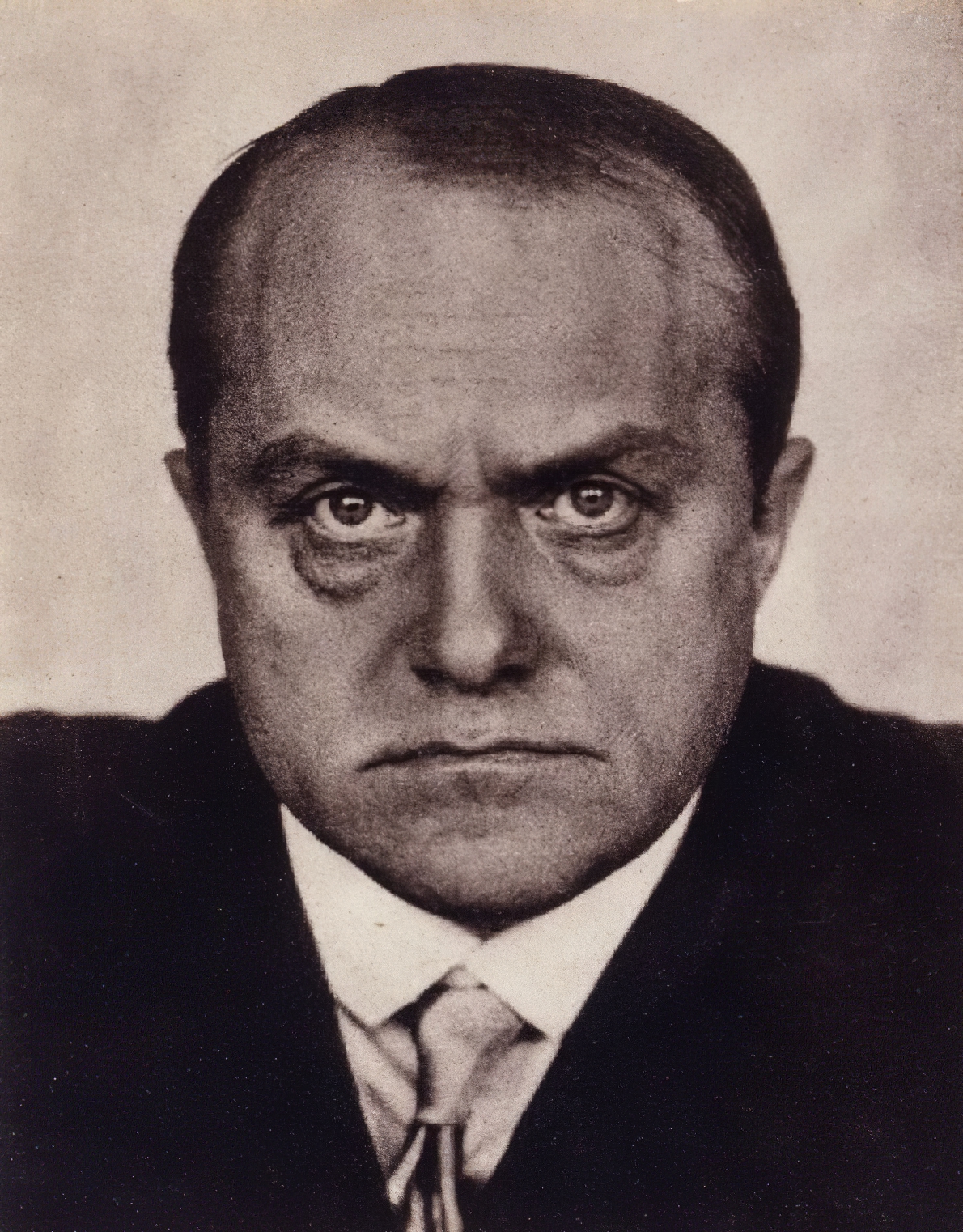
Max Beckmann, a German painter, printmaker, sculptor, and writer, stood out in the early 20th century for his profound contributions to modern art. Beckmann's career spanned a tumultuous period in history, deeply influencing his thematic and stylistic choices. Unlike many of his contemporaries who embraced non-representational painting, Max Beckmann persisted with and evolved the tradition of figurative painting, drawing inspiration from a wide array of artists spanning from Cézanne and Van Gogh to medieval masters like Bosch and Bruegel.
Max Beckmann's experiences, particularly those related to the World Wars, significantly shaped his work. Following Adolf Hitler's rise to power and the subsequent condemnation of modern art as "degenerate," Beckmann fled Germany, spending a decade in self-imposed exile in Amsterdam before eventually relocating to the United States. His art from this period, especially his large triptychs, is considered some of his most potent, offering a stark reflection on humanity and the chaos of the times.
One of Max Beckmann's most personally allegorical works, "Beginning" (1949), encapsulates his knack for blending real and imagined elements from his life to comment on the broader human condition. This piece, alongside others, underscores Beckmann's enduring fascination with the existential struggles modern society faces, teetering between desire and societal roles.
Max Beckmann's legacy is cemented not just by his unique approach to modernism but also by his influence on subsequent generations of artists, particularly in the United States, where he spent his final years teaching and working. Despite a path that often diverged from the mainstream narratives of art history, Beckmann's work continues to resonate, housed in prestigious institutions like The Museum of Modern Art and The Metropolitan Museum of Art in New York.
For collectors and experts in art and antiques, Max Beckmann's oeuvre offers a compelling exploration of 20th-century art and history. To stay informed about new discoveries, sales, and auction events related to Max Beckmann, consider signing up for updates. This subscription ensures access to the latest opportunities to engage with the work of one of modernism's most individual voices.
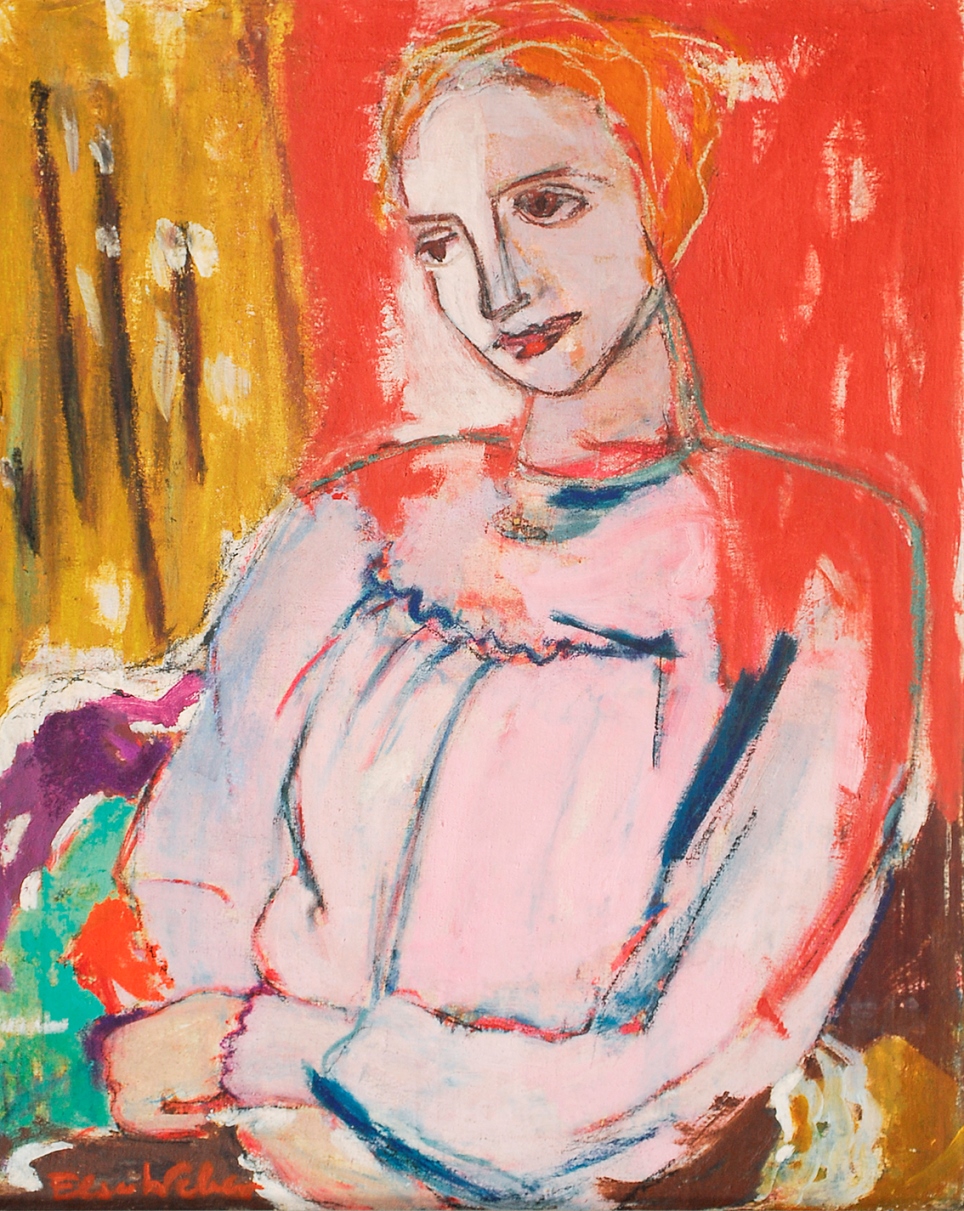
Else Weber-Rouwolf, born Else Rouwolf, was a German artist of expressive realism.
Else painted her first picture at the age of 30 and first exhibited in Hamburg in 1926. She became a participant of the Hamburg Secession, a member of the "Hamburg Society of Artists" and "Gedok", was friends with E. Hartmann and G. Volville. In 1929, the artist went to Paris for a year to study at the Academy Grande Chaumiere.
The main direction of Weber's work was portraiture - her models were artists, friends, husband and daughter, acquaintances and their children. Elsa also traveled extensively and painted landscapes. She survived the war, painted until she was ninety and died at the age of 100.
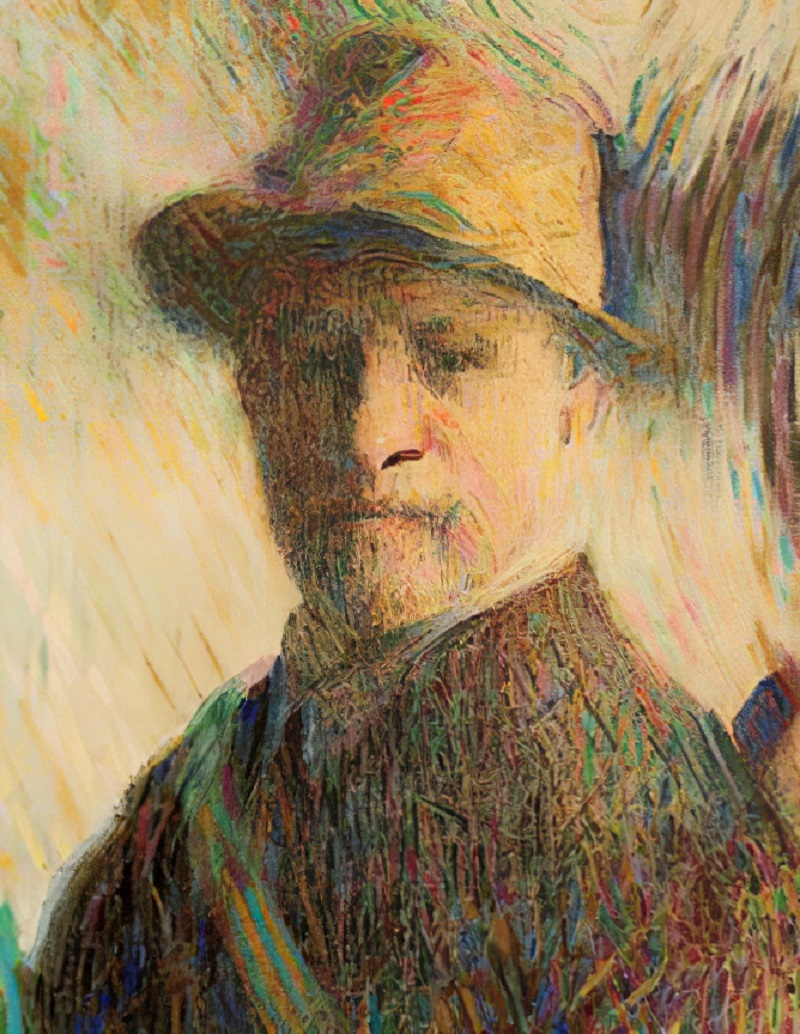
Hugo Curt Herrmann was a German Impressionist and Neo-Impressionist painter; associated with the Berlin Secession. Although he was primarily interested in painting portraits, he also spent some time with the history painter Wilhelm von Lindenschmit at the Academy of Fine Arts, Munich. In 1885, he set up as a portrait painter in Munich and befriended the art critic Richard Muther. In 1893, he moved to Berlin, where he opened a drawing and painting school for women. In 1898, he became one of the founding members of the Berlin Secession and sat on its advisory board. He operated his school intermittently until 1903, when he joined the Deutscher Künstlerbund. He also worked to promote younger artists, such as Arthur Segal, Alexej von Jawlensky, Adolf Erbslöh and others associated with Die Brücke. He was named a Professor at the Royal Academy of Arts in 1917.
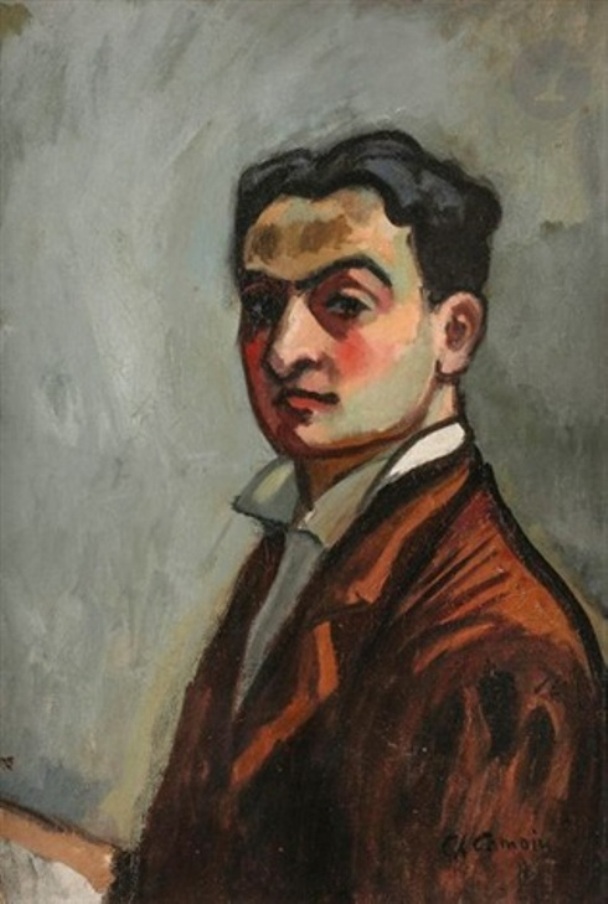
Charles Camoin, a French expressionist landscape painter, was a prominent figure associated with the Fauvism movement. Born in Marseille, France, on September 23, 1879, Camoin's journey into the art world began at a young age, leading him to Paris where he joined Gustave Moreau's class at the École des Beaux-Arts. It was here that he met Henri Matisse and other artists who would form the nucleus of the Fauve group, a circle known for their wild, expressionist-like use of color, which earned them the moniker "the wild beasts".
Camoin's art is celebrated for its vibrant color palette and expressive landscapes, a testament to his association with the Fauvists. Despite this, his work displayed a chromatic moderation, attributed to his intuitive and non-systematic approach to fauvism, setting him apart from his contemporaries. His masterpiece, the Portrait of Albert Marquet, epitomizes Camoin's unique style and is considered a pivotal piece of his oeuvre.
Throughout his career, Camoin's works were widely exhibited, earning him a place in major French collections, including the Musée d'Art Moderne de la ville de Paris and the Centre Georges Pompidou. Notably, his contributions to art were recognized with the Prix du Président de la République at the Biennale of Menton in 1955. His legacy includes a significant body of work that remains influential in the study of Fauvism and early 20th-century French art. Camoin passed away in Paris on May 20, 1965, leaving behind a rich legacy that continues to inspire art enthusiasts and collectors alike.
For collectors and experts in art and antiques, Camoin's work represents not only a pivotal moment in the evolution of modern art but also an opportunity to engage with the vibrant and emotive expressions of Fauvism. His paintings, characterized by a joyful and luminous use of color, offer a captivating glimpse into the artist's perception of the world around him.
If you're interested in staying updated on new discoveries, sales, and auction events related to Charles Camoin, signing up for updates can be a valuable resource. This ensures you're informed about the latest opportunities to acquire works by this remarkable artist, enhancing your collection with pieces that embody the spirit and innovation of early 20th-century art.
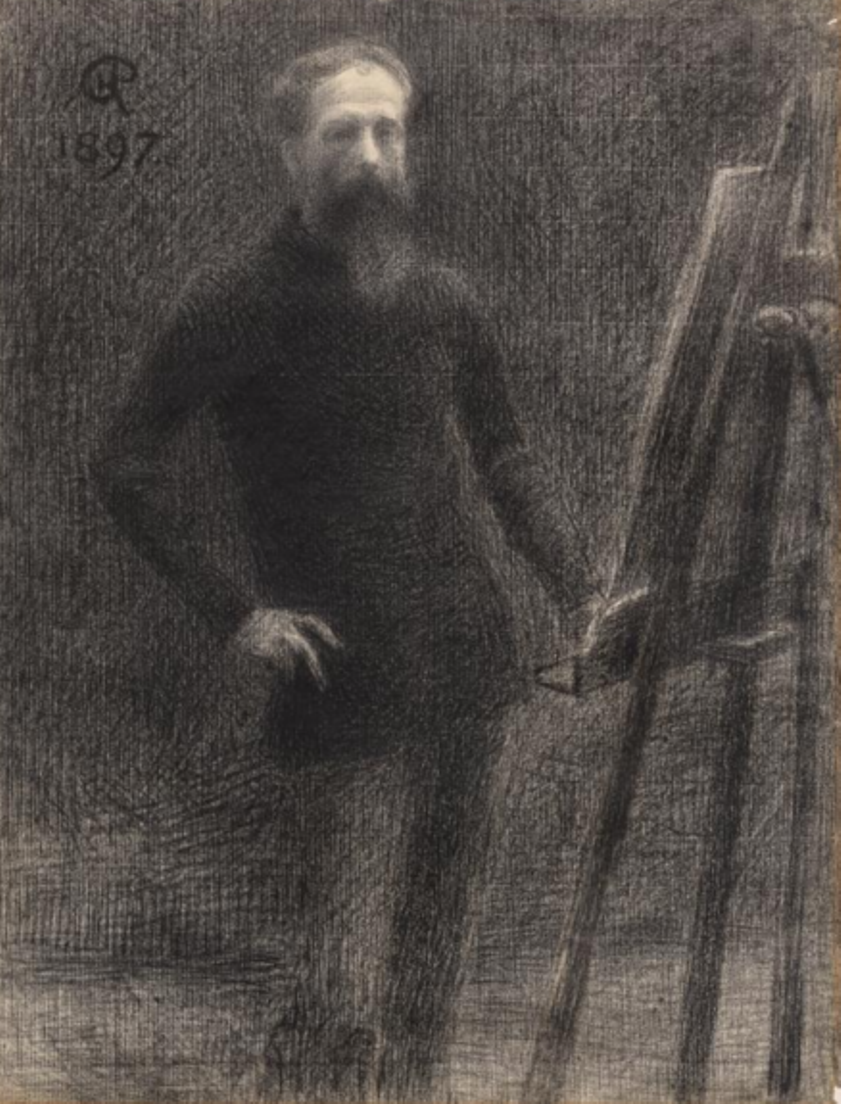
Hippolyte Petitjean was a French Neo-Impressionist painter of pointillism.
Hippolyte studied at the School of Fine Arts in Paris, where he became interested in Impressionism. He then mastered the Neo-Impressionist technique of pointillism to perfection. A close friend of Georges Serat, Petitjean regularly exhibited with fellow practitioners. Although he abandoned working with divided color for a few years, he resumed the pointillist technique around 1912, creating luminous watercolors. In his later watercolors, Petitjean used widely spaced circular dots of pure color, leaving much of the surface of the paper untouched.
Petitjean painted landscapes and portraits, still lifes and genre scenes.
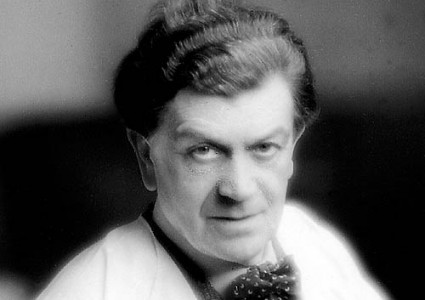
Othon Friesz was a French artist, pivotal in the Fauvism movement, celebrated for his vivid use of color and dynamic composition. Born in Le Havre, his artistic journey began under the guidance of Charles Lhuillier, which deeply influenced his foundational style. Initially, Friesz experimented with the luminous palette of Fauvism, creating works alongside contemporaries like Henri Matisse and André Derain. His Fauvist period was marked by bold, unmodulated colors aimed at capturing the emotional effect of a scene rather than its realistic depiction.
However, the later years of his career saw a significant shift in his artistic approach. Moving away from the Fauvist style, Friesz embraced a more classical and structured composition, drawing inspiration from the likes of Poussin, Chardin, and Corot. This transition reflected his respect for Cézanne's principles of logical composition and simple tonality. Despite this evolution, his work retained a baroque vitality, particularly in his landscapes, still lifes, and figure paintings, where the careful arrangement of planes and volumes spoke of his deep understanding of spatial relationships.
Friesz's oeuvre is a testament to his versatility and ability to adapt and evolve his style while remaining rooted in classical traditions. His works, spanning from vibrant Fauvist landscapes to more restrained classical compositions, are housed in prestigious collections and museums worldwide, offering a comprehensive view of his artistic development.
For art collectors and enthusiasts, Friesz's body of work offers a unique insight into the early 20th-century European art scene, particularly the transition from avant-garde movements like Fauvism to more traditional approaches. His paintings not only reflect his personal artistic journey but also the broader shifts in art history during his lifetime.
To stay informed on new product sales and auction events related to Othon Friesz, signing up for updates can be a valuable resource. This subscription ensures that collectors and experts in art and antiques are always in the know regarding opportunities to acquire works by this influential artist.
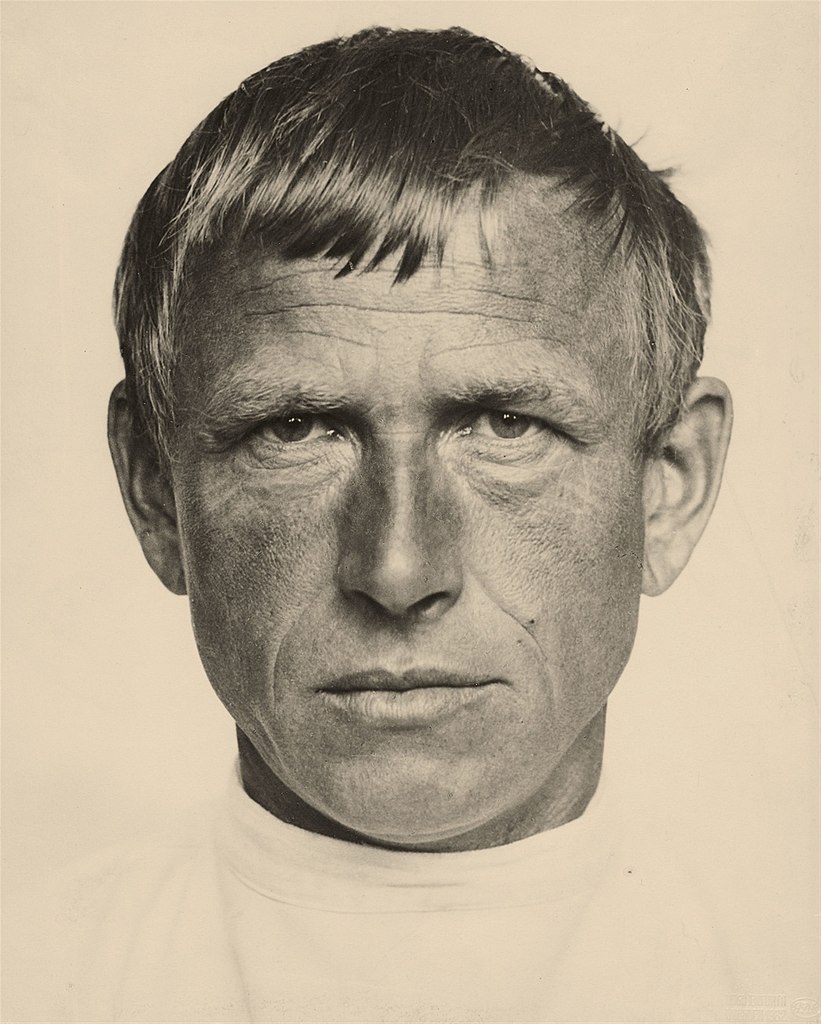
Wilhelm Heinrich Otto Dix was a German artist whose work stands as a stark, unyielding reflection of the societal tumult and trauma of the early 20th century. Born in 1891 in Untermhaus, Germany, Dix's early life was steeped in the arts, his ambition to become an artist nurtured by both familial influence and formal education in Dresden. His experiences as a soldier in World War I deeply influenced his artistic direction, leading him to vividly depict the horrors of war and the decay of the Weimar Republic with a brutal realism that became his signature style.
Dix's association with the Dada movement and the New Objectivity (Neue Sachlichkeit) further honed his critical, often cynical portrayal of post-war society. His works, such as "The Trench" and "War Cripples," expose the visceral aftermath of conflict, while his engagement with the Dadaists imbued his art with a disruptive, confrontational energy against societal norms and the art establishment.
Perhaps most notable is Dix's ability to capture the psychological depth and societal critiques through his portraits and landscapes, which ranged from the grotesque to the surreal. Paintings like "Portrait of the Journalist Sylvia von Harden" and the triptychs "Metropolis" and "War" are emblematic of his keen observation and stark depiction of the era's social and political unrest.
Despite facing significant adversity, including being labeled a degenerate artist by the Nazi regime and facing professional and personal setbacks, Dix's legacy as a painter and printmaker endures. His works are not only historical documents but also profound reflections on humanity, war, and society, resonating with collectors and art experts alike.
For enthusiasts of culture, art, and history, Dix's oeuvre offers an unflinching look into the human condition under the strain of societal and political upheaval. His contributions to painting and printmaking continue to be celebrated in museums and galleries worldwide, underscoring the enduring relevance of his work.
For those interested in exploring the profound depth and historical significance of Otto Dix's work, signing up for updates on new product sales and auction events related to his art can provide invaluable insights. This subscription is a gateway to staying informed about opportunities to engage with the tangible pieces of Dix's enduring legacy.
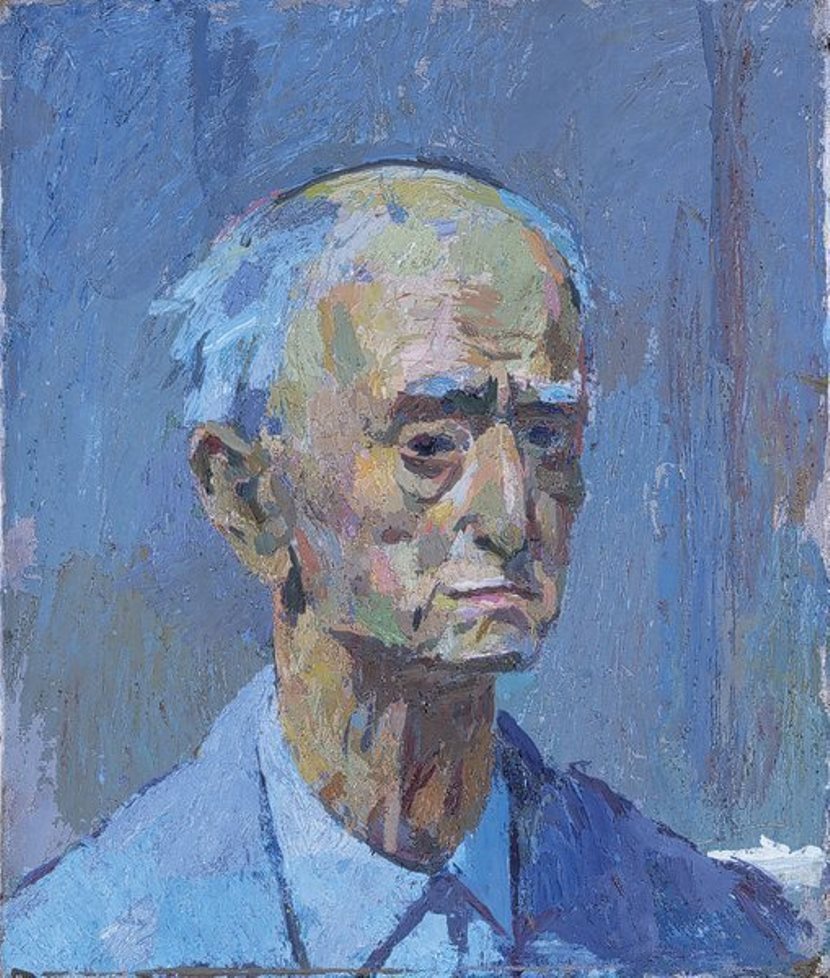
Bernhard Kretzschmar was a German painter and graphic artist.
Kretzschmar studied at the Dresden Academy, in 1920 destroyed most of his work and began his career anew. In 1932 he co-founded the Dresden Secession, but later the Social Democrats banned him as a degenerate artist, and his paintings were removed from museums and galleries. Kretzschmar hated the Nazis and had to flee the country.
Like many artists of his generation, he dabbled in Expressionism, then switched to Verismo. He skillfully tried his hand at both Futurism and Impressionism. He painted on the themes of social poverty, as well as comically depicting the bourgeois way of life. In 1945, most of his works were destroyed in an air raid.
After World War II, social motifs receded into the background and Kretzschmar focused more on landscapes, more often in the suburban areas of Dresden. He also painted several self-portraits with somber, skeptical and ironic facial expressions during his lifetime, which provide a vivid characterization of the artist.
From 1946, Bernhard Kretzschmar worked as a professor at the University of Fine Arts in Dresden. In 1959 he received the National Prize of the GDR, and since 1969 he has been a corresponding member of the German Academy of Arts in East Berlin.
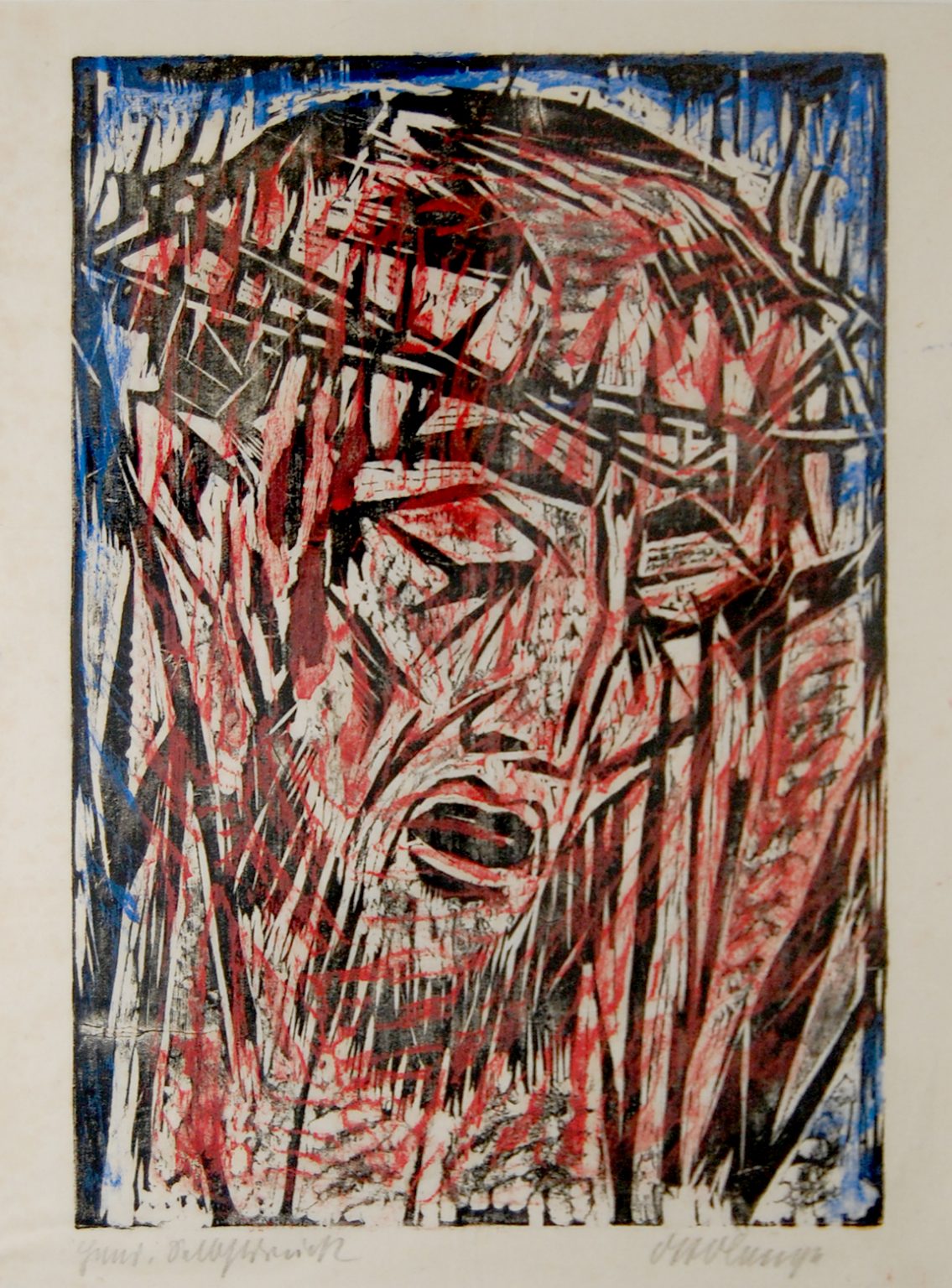
Otto Lange was a German Expressionist painter and graphic artist.
Lange was arrested by the National Socialists in 1933, and lost his professorship. He then worked as a freelance artist in Dresden. In 1938, two of his paintings were shown at the Munich Degenerate Art Exhibition.
Lange produced an extensive body of printed graphic work; his subjects ranged from religious representations to still lifes to book illustrations. His woodcuts differed from those of other expressionists, as Lange mainly used an elaborate technique of colour printing. Most of the time he did not print his work with a press or use a brayer, but instead made hand rubbings after he had inked the printing block directly with a brush.

Bernhard Kretzschmar was a German painter and graphic artist.
Kretzschmar studied at the Dresden Academy, in 1920 destroyed most of his work and began his career anew. In 1932 he co-founded the Dresden Secession, but later the Social Democrats banned him as a degenerate artist, and his paintings were removed from museums and galleries. Kretzschmar hated the Nazis and had to flee the country.
Like many artists of his generation, he dabbled in Expressionism, then switched to Verismo. He skillfully tried his hand at both Futurism and Impressionism. He painted on the themes of social poverty, as well as comically depicting the bourgeois way of life. In 1945, most of his works were destroyed in an air raid.
After World War II, social motifs receded into the background and Kretzschmar focused more on landscapes, more often in the suburban areas of Dresden. He also painted several self-portraits with somber, skeptical and ironic facial expressions during his lifetime, which provide a vivid characterization of the artist.
From 1946, Bernhard Kretzschmar worked as a professor at the University of Fine Arts in Dresden. In 1959 he received the National Prize of the GDR, and since 1969 he has been a corresponding member of the German Academy of Arts in East Berlin.
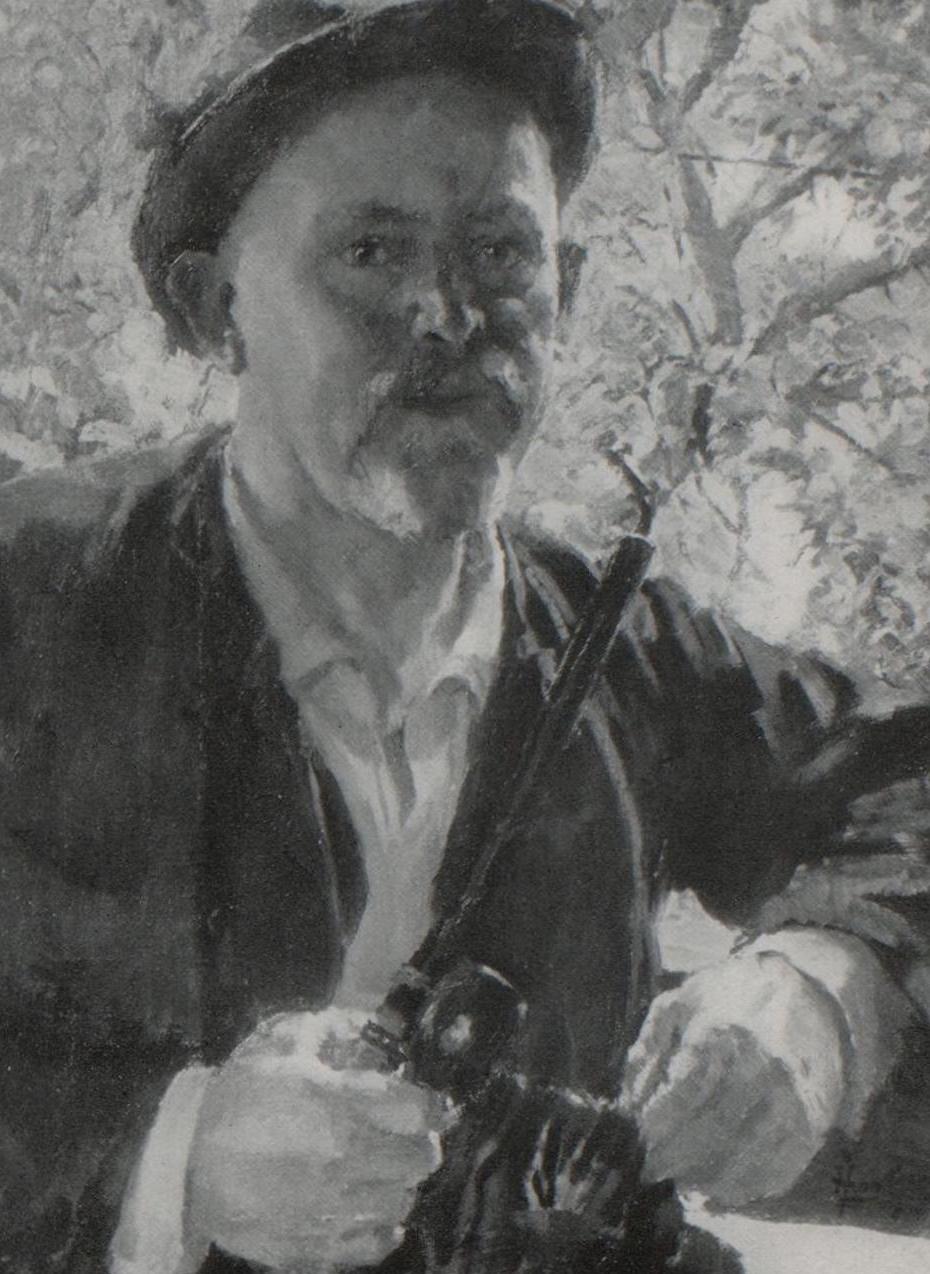
Hermann Groeber was a German painter who was known throughout Germany as a portraitist and landscape artist.
Hermann Groeber gained early success as a self-employed painter. He joined the German Association of Artists, and after Ludwig Schmid-Reutte was appointed to Karlsruhe, Groeber took over his class of nude acts, which soon enjoyed great popularity.
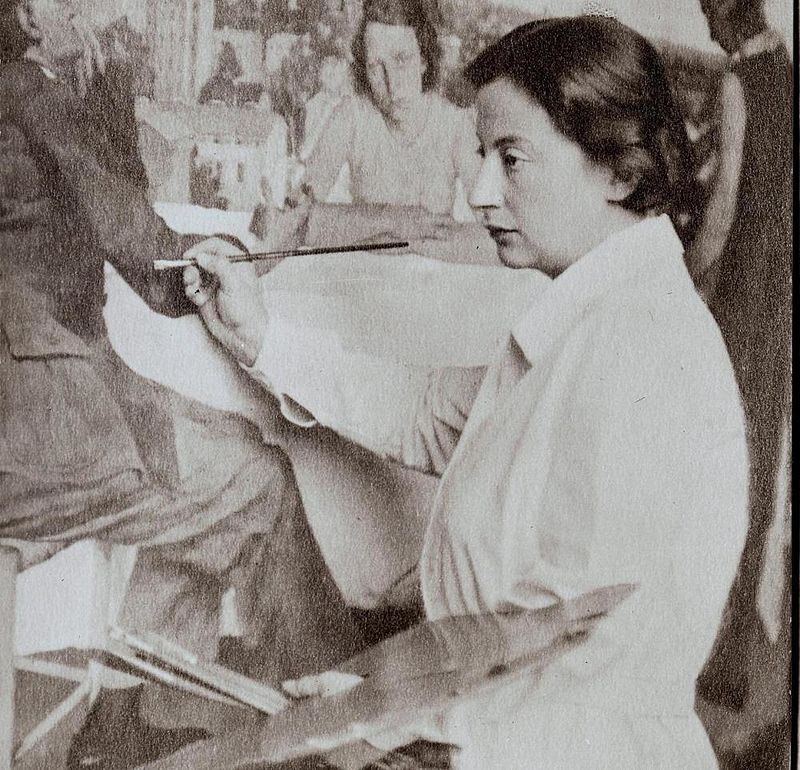
Lotte Laserstein was a German-Swedish artist and a prominent representative of German realism.
Lotte was a student at the prestigious Berlin Academy of Fine Arts and became an accomplished realist painter, receiving a gold medal from the Academy for her work. Her first exhibition took place in 1930 at a Berlin gallery. Laserstein worked partly in figurative painting, had apprentices, and illustrated anatomy texts to earn money. She also painted portraits of cosmopolitan, emancipated women as well as self-portraits.
The National Socialist regime forced the artist to leave Germany in 1937 and emigrate to Sweden. Her mother died in a concentration camp. Lotte Laserstein lived in Stockholm until the end of her life, creating over five decades of work, in addition to expressive self-portraits, many moving images of other immigrants, rural landscapes and urban scenes in Sweden.
Lotte Laserstein became a member of the Swedish Academy of Fine Arts and earned a reputation as a popular and respected portraitist. She has approximately 10,000 works in her oeuvre.
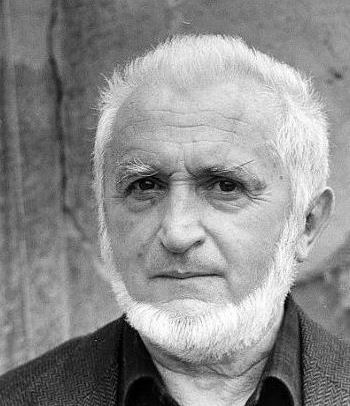
Otto Eglau was a German graphic artist.
During World War II he served in the Nazi army and was a prisoner of war. After his liberation, Eglau studied at the Berlin Academy of Art and taught free drawing and painting at the Technical University of Berlin. Between 1951 and 1970, Eglau made study trips around the world and taught etching technique at the International Summer Academy of Fine Arts in Salzburg. From 1983 until his death in 1988, he worked alternately in studios in Berlin and on the island of Sylt.
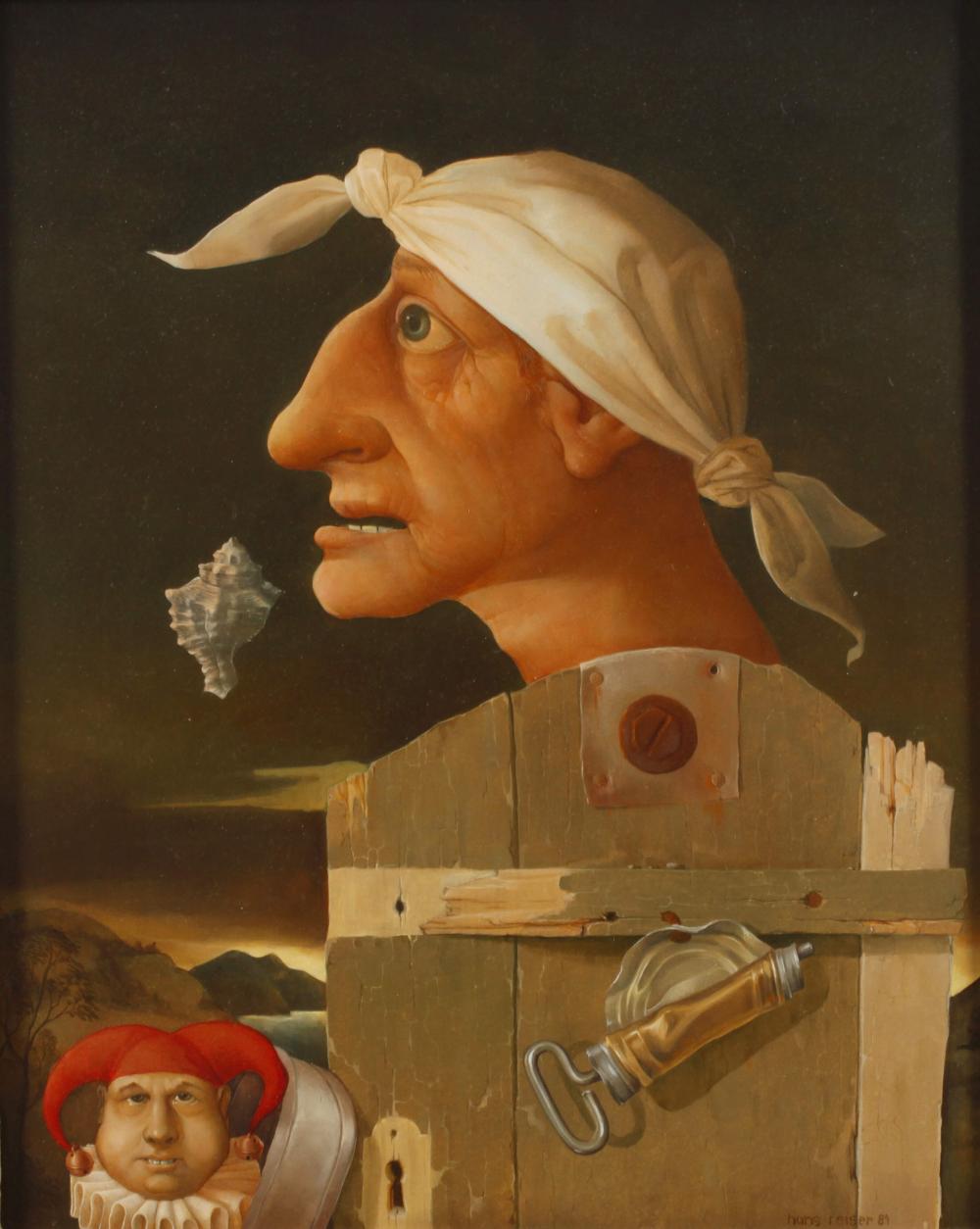
Hans Reiser is a German surrealist artist and caricaturist who lives and works in Reichersboerne.
Hans Reiser studied at the Academy of Fine Arts in Munich and has been drawing weekly cartoons for the Telzer Kurier since 1970. His work has also been published in many newspapers and magazines. Since 1979, the artist has participated in numerous exhibitions at home and abroad.
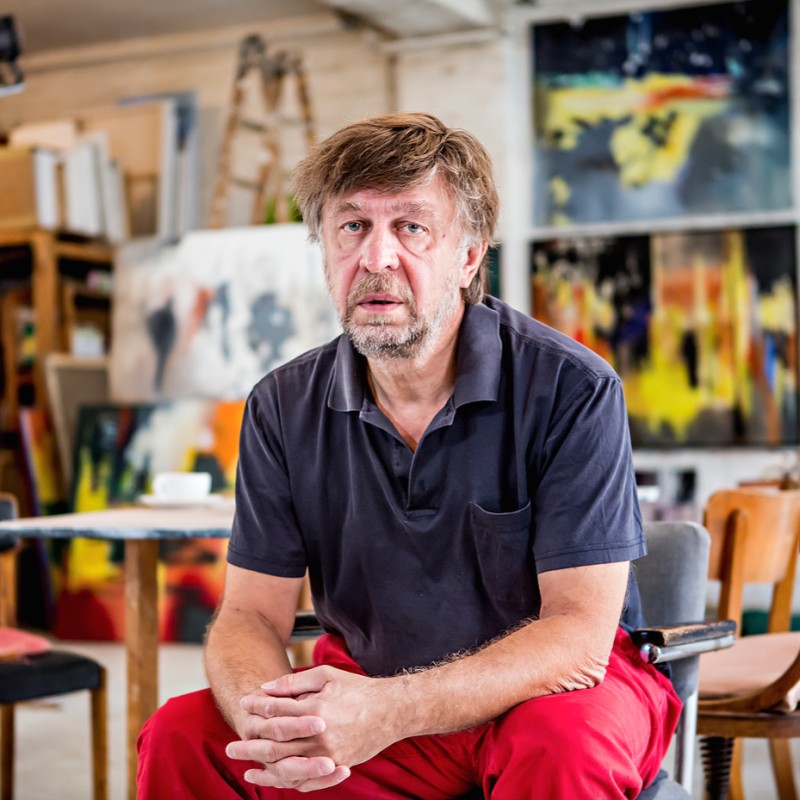
Reinhard Stangl is a German artist living and working in Berlin and Brazil.
Stangl studied painting at the Dresden University of Fine Arts. He later held visiting professor positions himself, including at the Hochschule der Bildende Künste Berlin and the Hochschule für Gestaltung Hamburg.
Stangl paints in a variety of genres. Some of the artist's works are based on the urbanism of the metropolis, while others, on the contrary, are closer to nature and landscape. Among his paintings there are scenes in restaurants, and full of dynamics sports scenes. In terms of saturation of colors and emotions, his paintings are also very different, but they are always characterized by inner power.
The artist's works are in various famous collections, including the German Bundestag or the Berlin Gallery.

Reinhard Stangl is a German artist living and working in Berlin and Brazil.
Stangl studied painting at the Dresden University of Fine Arts. He later held visiting professor positions himself, including at the Hochschule der Bildende Künste Berlin and the Hochschule für Gestaltung Hamburg.
Stangl paints in a variety of genres. Some of the artist's works are based on the urbanism of the metropolis, while others, on the contrary, are closer to nature and landscape. Among his paintings there are scenes in restaurants, and full of dynamics sports scenes. In terms of saturation of colors and emotions, his paintings are also very different, but they are always characterized by inner power.
The artist's works are in various famous collections, including the German Bundestag or the Berlin Gallery.

Reinhard Stangl is a German artist living and working in Berlin and Brazil.
Stangl studied painting at the Dresden University of Fine Arts. He later held visiting professor positions himself, including at the Hochschule der Bildende Künste Berlin and the Hochschule für Gestaltung Hamburg.
Stangl paints in a variety of genres. Some of the artist's works are based on the urbanism of the metropolis, while others, on the contrary, are closer to nature and landscape. Among his paintings there are scenes in restaurants, and full of dynamics sports scenes. In terms of saturation of colors and emotions, his paintings are also very different, but they are always characterized by inner power.
The artist's works are in various famous collections, including the German Bundestag or the Berlin Gallery.

Reinhard Stangl is a German artist living and working in Berlin and Brazil.
Stangl studied painting at the Dresden University of Fine Arts. He later held visiting professor positions himself, including at the Hochschule der Bildende Künste Berlin and the Hochschule für Gestaltung Hamburg.
Stangl paints in a variety of genres. Some of the artist's works are based on the urbanism of the metropolis, while others, on the contrary, are closer to nature and landscape. Among his paintings there are scenes in restaurants, and full of dynamics sports scenes. In terms of saturation of colors and emotions, his paintings are also very different, but they are always characterized by inner power.
The artist's works are in various famous collections, including the German Bundestag or the Berlin Gallery.
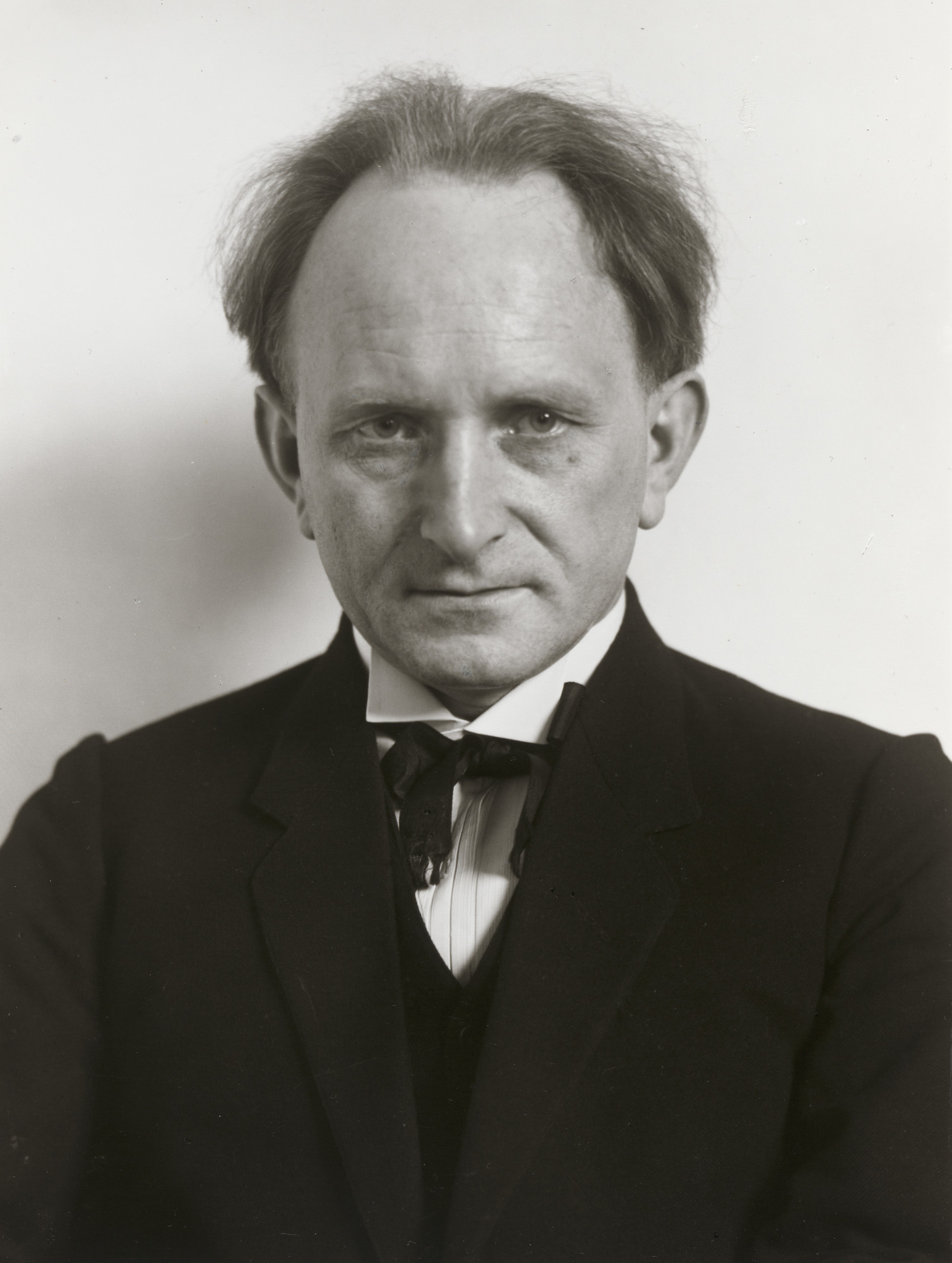
August Sander was a German portrait and documentary photographer. Sander's first book Face of our Time (German: Antlitz der Zeit) was published in 1929. Sander has been described as "the most important German portrait photographer of the early twentieth century".

August Sander was a German portrait and documentary photographer. Sander's first book Face of our Time (German: Antlitz der Zeit) was published in 1929. Sander has been described as "the most important German portrait photographer of the early twentieth century".
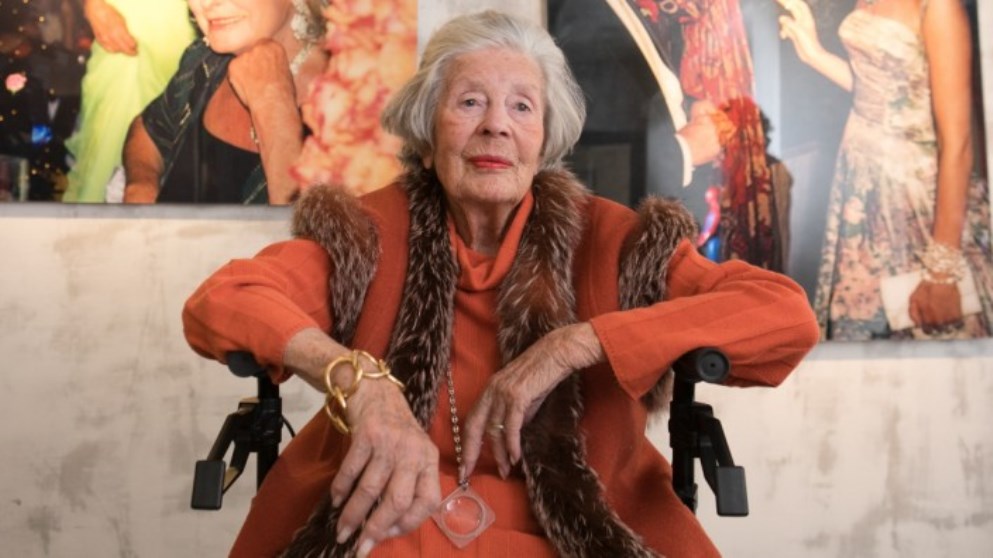
Marianne "Manni" Sayn-Wittgenstein-Sayn, real name Maria Anna Sayn-Wittgenstein-Sayn, née Mayr-Melnhof, is a dowager princess and Austrian photographer.
On her mother's side, Maria is a direct descendant of Empress Maria Theresa, which has opened all doors of aristocracy, business, politics and art to her. She was encouraged to take up photography by Lilly Palmer and Karl Lagerfeld after her husband died in 1962. Soon she was working with Frau im Spiegel magazine, then Bunte and Vogue.
Wherever she was - skiing in St. Moritz, on a yacht, at parties and weddings, in Europe and in America, Maria photographed everyone around her: Onassis and Maria Callas, Prince Charles, Gianni Agnelli, Romy Schneider, Luciano Pavarotti, the Queen Mother or King Juan Carlos. During her lifetime she photographed many world celebrities. By her centenary, Maria had more than 300,000 of her photographs in her archive.
Maria never took immodest or offensive photos of her friends. Princess Caroline of Monaco once joked, "You're not a paparazzi, you're a mamarazza," thus the nickname Marianne Sayn-Wittgenstein-Sayn was born.

Marianne "Manni" Sayn-Wittgenstein-Sayn, real name Maria Anna Sayn-Wittgenstein-Sayn, née Mayr-Melnhof, is a dowager princess and Austrian photographer.
On her mother's side, Maria is a direct descendant of Empress Maria Theresa, which has opened all doors of aristocracy, business, politics and art to her. She was encouraged to take up photography by Lilly Palmer and Karl Lagerfeld after her husband died in 1962. Soon she was working with Frau im Spiegel magazine, then Bunte and Vogue.
Wherever she was - skiing in St. Moritz, on a yacht, at parties and weddings, in Europe and in America, Maria photographed everyone around her: Onassis and Maria Callas, Prince Charles, Gianni Agnelli, Romy Schneider, Luciano Pavarotti, the Queen Mother or King Juan Carlos. During her lifetime she photographed many world celebrities. By her centenary, Maria had more than 300,000 of her photographs in her archive.
Maria never took immodest or offensive photos of her friends. Princess Caroline of Monaco once joked, "You're not a paparazzi, you're a mamarazza," thus the nickname Marianne Sayn-Wittgenstein-Sayn was born.

Marianne "Manni" Sayn-Wittgenstein-Sayn, real name Maria Anna Sayn-Wittgenstein-Sayn, née Mayr-Melnhof, is a dowager princess and Austrian photographer.
On her mother's side, Maria is a direct descendant of Empress Maria Theresa, which has opened all doors of aristocracy, business, politics and art to her. She was encouraged to take up photography by Lilly Palmer and Karl Lagerfeld after her husband died in 1962. Soon she was working with Frau im Spiegel magazine, then Bunte and Vogue.
Wherever she was - skiing in St. Moritz, on a yacht, at parties and weddings, in Europe and in America, Maria photographed everyone around her: Onassis and Maria Callas, Prince Charles, Gianni Agnelli, Romy Schneider, Luciano Pavarotti, the Queen Mother or King Juan Carlos. During her lifetime she photographed many world celebrities. By her centenary, Maria had more than 300,000 of her photographs in her archive.
Maria never took immodest or offensive photos of her friends. Princess Caroline of Monaco once joked, "You're not a paparazzi, you're a mamarazza," thus the nickname Marianne Sayn-Wittgenstein-Sayn was born.
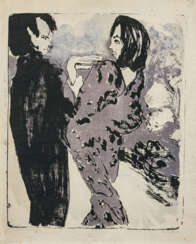

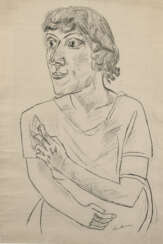

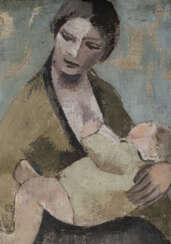

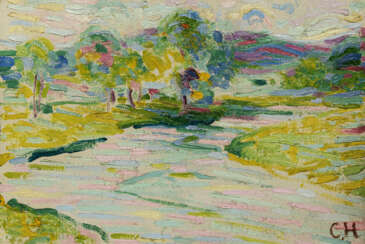

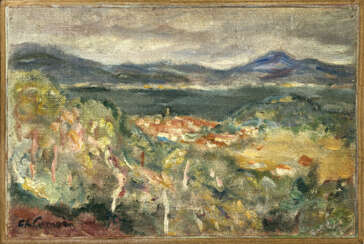

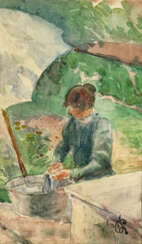

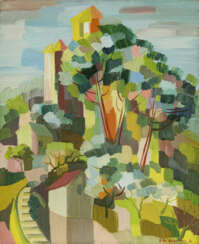

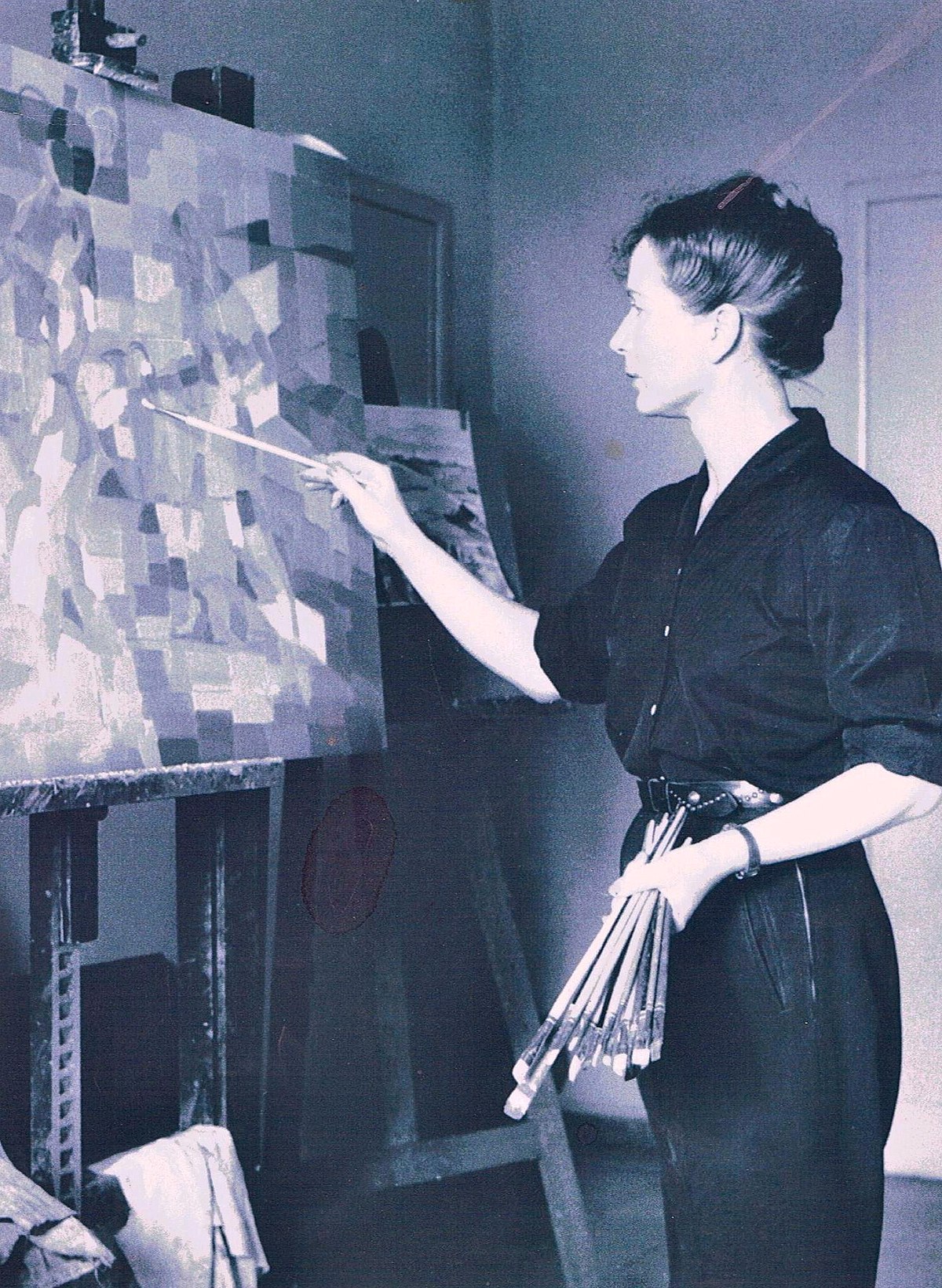
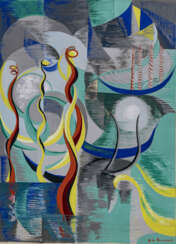

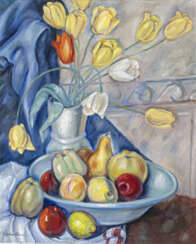

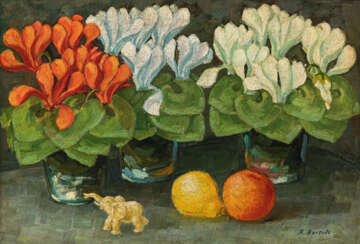

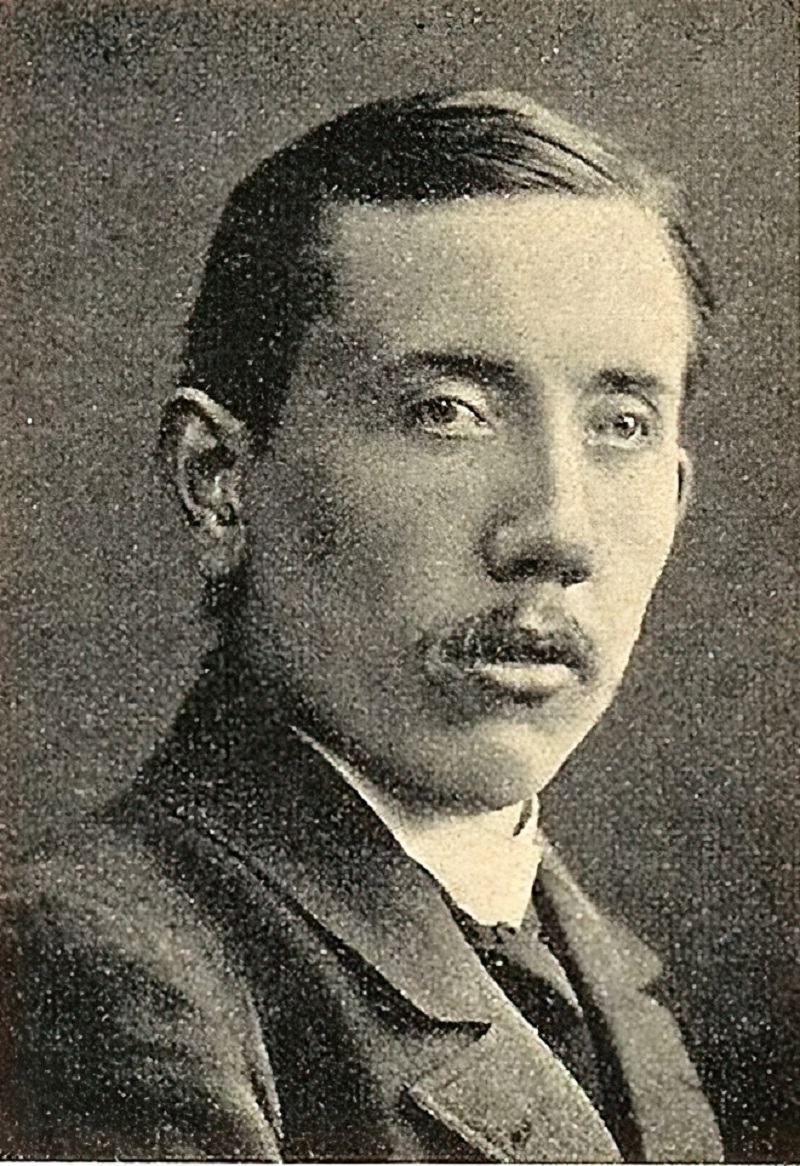
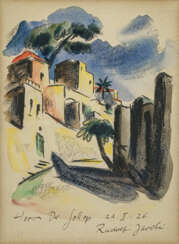

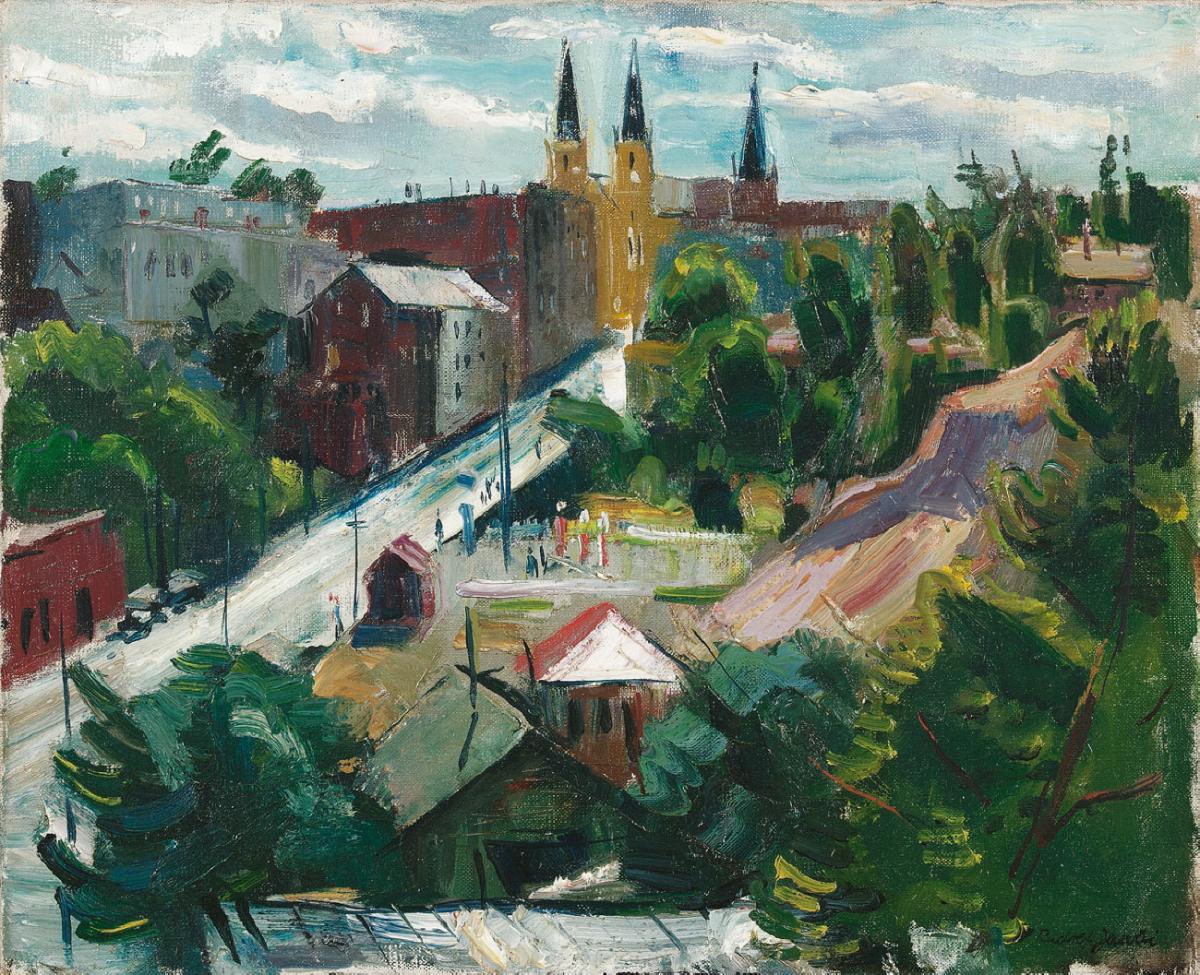
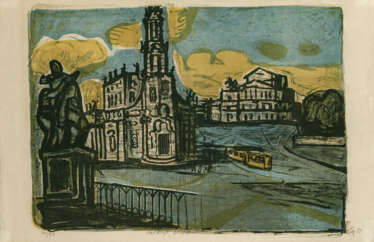

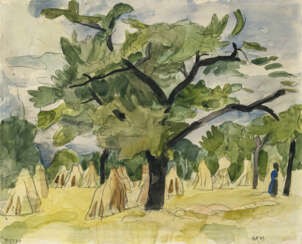

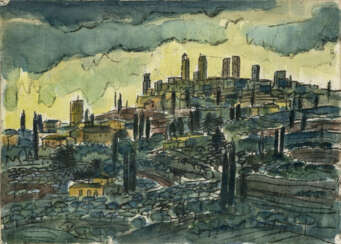

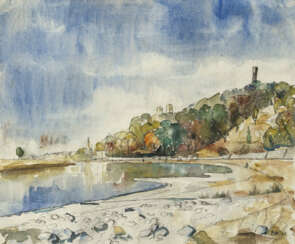

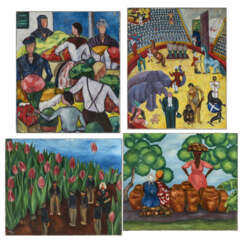

 Loring.jpg)
